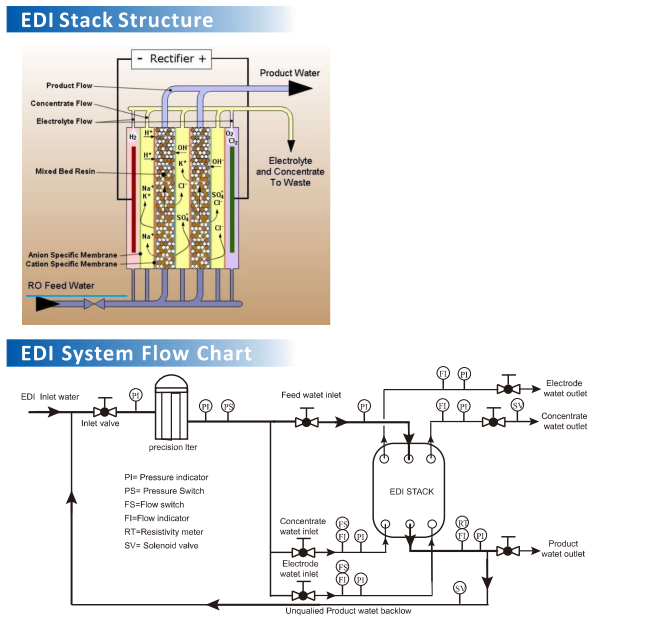EDI (Electrodeionization) is a water purification technology that combines ion exchange and electrodialysis to remove ions from water. It is often used as a polishing step in water treatment processes to produce high-purity water for various industrial applications.
In an EDI system, water passes through a series of ion exchange resin and ion-selective membranes. Electrodes are placed on either side of the module, and a direct current (DC) electric field is applied across the system. This electric field causes the migration of ions through the ion-selective membranes and into the ion exchange resin beds, effectively removing them from the water stream.

The ion exchange resin beds in the EDI system continuously regenerate as the ions are removed, eliminating the need for periodic regeneration or the use of chemicals. This makes EDI a more sustainable and cost-effective alternative to traditional ion exchange processes.
EDI is commonly used in industries such as power generation, semiconductor manufacturing, pharmaceutical production, and other applications that require high-purity water. It can effectively remove a wide range of ions, including cations (positively charged ions) and anions (negatively charged ions), resulting in water with low conductivity and reduced levels of impurities.

EDI Ultrap is a brand of EDI systems offered by some manufacturers. It is often used to describe EDI systems designed for ultrapure water applications, where exceptionally low levels of ions and contaminants are required.

In summary, EDI is an advanced water purification technology that uses an electric field to remove ions from water, and EDI Ultrap refers to EDI systems designed for ultrapure water applications.And offers several advantages, including reduced chemical usage, lower operating costs, consistent water quality, and continuous operation. It is a reliable and efficient technology for producing high-purity water in various industrial settings.
